
- ELEMENTARY TEACHING , LITERACY

How to Teach Research Skills to Elementary Students in 2024
Research skills are incredibly important in the world we live in today. When we come across a problem or a question, what do we do? We quickly search online to find the answer. We are using our research skills while we are doing this. Read below to learn how to teach research skills to elementary students! This will help you prepare your twenty-first century learners for the ever-changing world we live in. You’ll have the confidence to create opportunities to apply these skills to research projects like this animal research project .
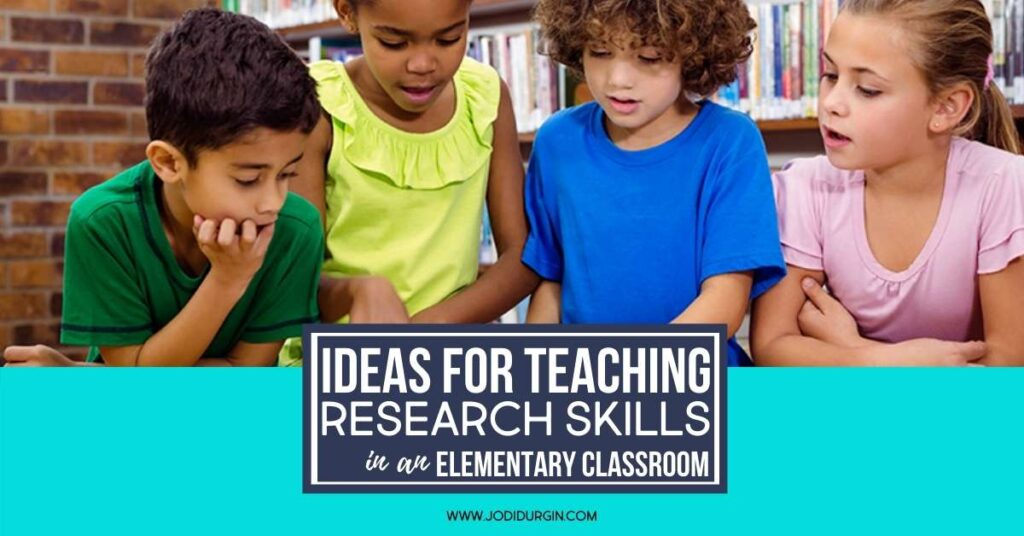
What are Research Skills?
Research skills is the ability to search for information about a topic, evaluate that information efficiently, and share findings in an organized way.
What Research Skills do Elementary Students Need?
Your elementary students are required to learn research skills if your state uses the Common Core or TEKS. Read below to learn what specific research standards your grade level covers.
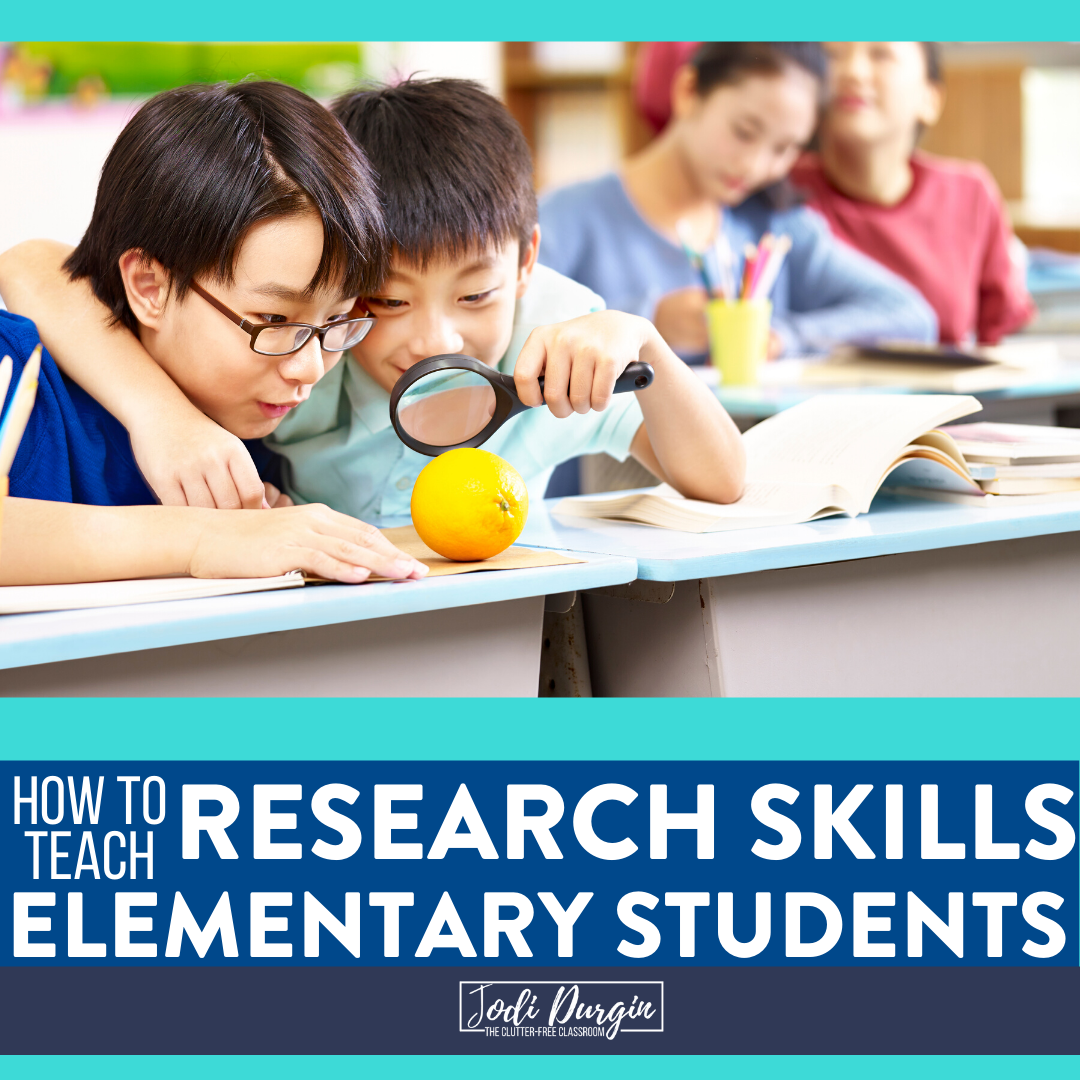
Research Standards in Common Core
The standards listed below are a good starting point for figuring out how to teach research skills to your elementary students.
Kindergarten
- ELA.W.K.7 : Participate in shared research and writing projects.
- ELA.W.K.8 : With guidance and support from adults, recall information from experiences or gather information from provided sources to answer a question.
First Grade
- ELA.W.1.7 : Participate in shared research and writing projects.
- ELA.W.1.8 : With guidance and support from adults, recall information from experiences or gather information from provided sources to answer a question.
Second Grade
- ELA.W.2.7 : Participate in shared research and writing projects.
- ELA.W.2.8 : Recall information from experiences or gather information from provided sources to answer a question.
Third Grade
- ELA.W.3.7 : Conduct short research projects that build knowledge about a topic.
- ELA.W.3.8 : Recall information from experiences or gather information from print and digital sources; take brief notes on sources and sort evidence into provided categories.
Fourth Grade
- ELA.W.4.7 : Conduct short research projects that build knowledge through investigation of different aspects of a topic.
- ELA.W.4.8 : Recall relevant information from experiences or gather relevant information from print and digital sources; take notes and categorize information, and provide a list of sources.
- ELA.4.9 : Draw evidence from literary or informational texts to support analysis, reflection, and research.
- ELA.4.9.B : Apply grade 4 Reading standards to informational texts.
Fifth Grade
- ELA.W.5.7 : Conduct short research projects that use several sources to build knowledge through investigation of different aspects of a topic.
- ELA.W.5.8 : Recall relevant information from experiences or gather relevant information from print and digital sources; summarize or paraphrase information in notes and finished work, and provide a list of sources.
- ELA.W.5.9 : Draw evidence from literary or informational texts to support analysis, reflection, and research.
- ELA.W.5.9.B : Apply grade 5 Reading standards to informational texts.
Research Standards in TEKS
The standards listed below are a good starting point for figuring out how to teach research skills to your students.
- Generate questions for formal and informal inquiry with adult assistance. (TEKS 12A)
- Develop and follow a research plan with adult assistance. (TEKS 12B)
- Gather information from a variety of sources with adult assistance. (TEKS 12C)
- Demonstrate understanding of information gathered with adult assistance. (TEKS 12D)
- Use an appropriate mode of delivery, whether written, oral, or multimodal, to present results. (TEKS 12E)
- Generate questions for formal and informal inquiry with adult assistance. (TEKS 13A)
- Develop and follow a research plan with adult assistance. (TEKS 13B)
- Identify and gather relevant sources and information to answer the questions with adult assistance. (TEKS 13C)
- Demonstrate understanding of information gathered with adult assistance. (TEKS 13D)
- Use an appropriate mode of delivery, whether written, oral, or multimodal, to present results. (TEKS 13E)
- Identify and gather relevant sources and information to answer the questions. (TEKS 13C)
- Identify primary and secondary sources. (TEKS 13D)
- Demonstrate understanding of information gathered. (TEKS 13E)
- Cite sources appropriately. (TEKS 13F)
- Use an appropriate mode of delivery, whether written, oral, or multimodal, to present results. (TEKS 13G)
- Generate questions on a topic for formal and informal inquiry. (TEKS 13A)
- Identify and gather relevant information from a variety of sources. (TEKS 13C)
- Recognize the difference between paraphrasing and plagiarism when using source materials. (TEKS 13F)
- Create a works cited page. (TEKS 13G)
- Use an appropriate mode of delivery, whether written, oral, or multimodal, to present results. (TEKS 13H)
- Generate and clarify questions on a topic for formal and informal inquiry. (TEKS 13A)
- Develop a bibliography. (TEKS 13G)
- Use an appropriate mode of delivery, whether written, oral, or multimodal, to present results . (TEKS 13H)
- Understand credibility of primary and secondary sources. (TEKS 13D)
- Differentiate between paraphrasing and plagiarism when using source materials. (TEKS 13F)
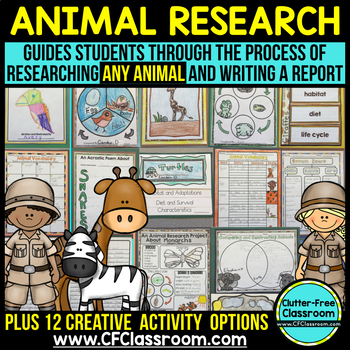
20 Research Mini Lesson Ideas
Below are 20 research mini lessons for how to teach research skills to elementary students.
- Research and What it Looks Like
- The Steps in the Research Process
- Types of Resources
- Text Features in Websites
- Finding Resources on the Internet
- Finding Information in Non-Fiction Books
- Text Features in Non-Fiction Texts
- How to Use an Encyclopedia
- Conducting an Interview with an Expert
- Reading a Newspaper and Getting Information from it
- Previewing a Text for Research
- Evaluating a Resource to Determine if it is Reliable
- Citing Sources
- Facts vs. Opinions
- Taking notes
- Paraphrasing
- Summarizing
- Organizing Information
- Writing Like an Informational Writer
- Presenting Findings
What are the Research Steps for Elementary Students?
Here are the 4 steps of the research process for elementary students:
- Choose a topic.
- Search for information.
- Organize information.
- Share information.
Ideas for Elementary School Research Topics
Below are research topic ideas for elementary students.
Animal Research Topics for Elementary Students
1. ocean animals.
Oyster, tuna, cod, grouper, shrimp, barnacle, barracuda, shark, bass, whale, lobster, starfish, salmon, clam, conch, coral, crab, sea otter, dolphin, eel, seal, sea turtle, flounder, octopus, sea star, haddock, jellyfish, krill, manatee, marlin, seahorse, sea otter, sea cucumber, sea lion, sea urchin, stingray, squid, swordfish, and walrus
2. Land Animals
Aardvark, elephant, frog, dog, tortoise, ant, anteater, antelope, fox, rabbit, baboon, camel, badger, owl, bat, bear, beaver, bison, rhinoceros, spider, bobcat, buffalo, bumble bee, butterfly, cat, chameleon, cheetah, chicken, chipmunk, cockroach, cougar, cow, coyote, gorilla, deer, donkey, dragonfly, eagle, emu, ferret, flamingo, goat, goose, hedgehog, heron, hippopotamus, horse, hummingbird, hyena, iguana, jaguar, kangaroo, koala, lemur, leopard, lion, llama, meerkat, mongoose, monkey, moth, mouse, mule, panther, parrot, peacock, pelican, peacock, pheasant, pig, platypus, porcupine, possum, puma, quail, raccoon, rattlesnake, sheep, skunk, sloth, squirrel, swan, termite, tiger, turkey, vulture, walrus, weasel, wolf, woodpecker, yak, and zebra
3. Endangered Species
Bengal tiger, polar bear, Pacific walrus, Magellanic penguin, leatherback turtle, bluefish tuna, mountain gorilla, monarch butterfly, Javan rhinoceros, giant panda, amur leopard, sei whale, Asian elephant, sumatran elephant, pangolin, African wild dog, amur tiger, blue whale, bonobo, chimpanzee, dugong, Indus river dolphin, orangutan, red panda, sea lion, vaquita, whale shark, yangtze finless porpoise, North Atlantic right whale, and yellowfish tuna
Resources for Teaching Elementary Research Skills
Below are resources for teaching elementary student research skills.
Animal Research Project
Learn more about the animal research project below!
What is the animal research project?
The animal research project is a printable and digital research project where students learn about any animal they choose. You can also choose the animals for them. The resource can be used over and over again all year long by just picking a new animal.
What grades is the animal research project appropriate for?
This resource includes tons of differentiated materials so it is appropriate for 2nd, 3rd, 4th, and 5th grade students.
What is included in the animal research project?
The animal research project includes the following:
- teacher’s guide with tips and instructions to support you with your lesson planning and delivery
- parent communication letter to promote family involvement
- graphic organizers for brainstorming a topic, activating schema, taking notes, drafting writing
- research report publishing printables including a cover, writing templates and resource pages
- grading rubric so expectations are clear for students and grading is quick and easy for you
- research activities (KWL, can have are chart, compare/contrast Venn diagram, habitat map, vocabulary pages, illustration page, and life cycle charts)
- flipbook project printables to give an additional choice of how students can demonstrate their understanding
- flap book project printables to offer students another way to demonstrate their learning
- research poster to serve as an additional way to demonstrate student understanding
- poetry activities to offer students an alternative way to demonstrate their learning
- digital version so your students can access this resource in school or at home
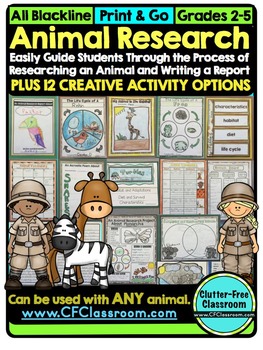
4 Research Websites
Below are 4 research websites for elementary students.
- http://www.kidrex.org
- https://www.kiddle.co
- https://www.safesearchkids.com
- https://www.kidzsearch.com/boolify/
You might also like...
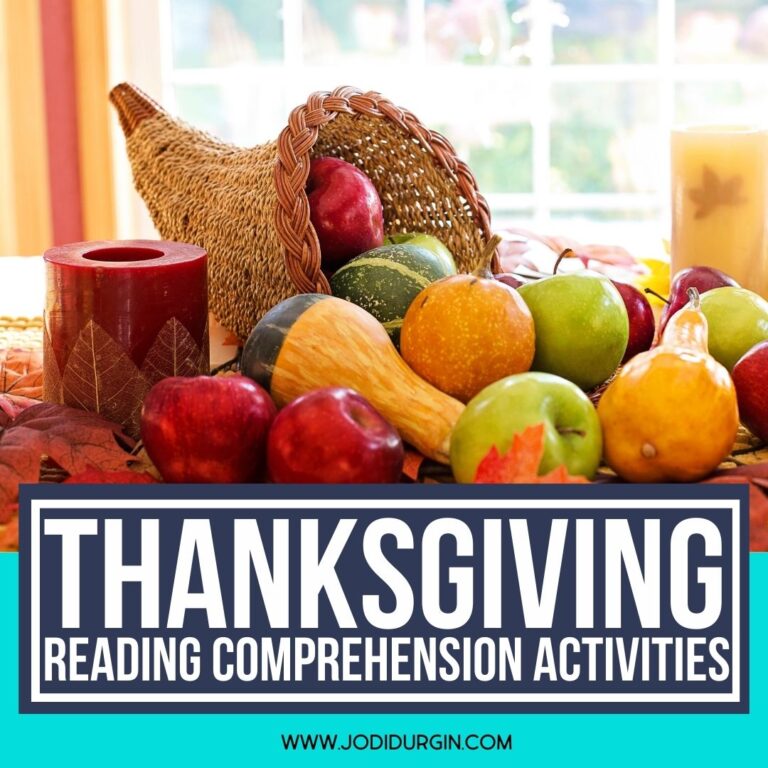
Thanksgiving Reading Comprehension Activities for 2nd, 3rd, and 4th Grade
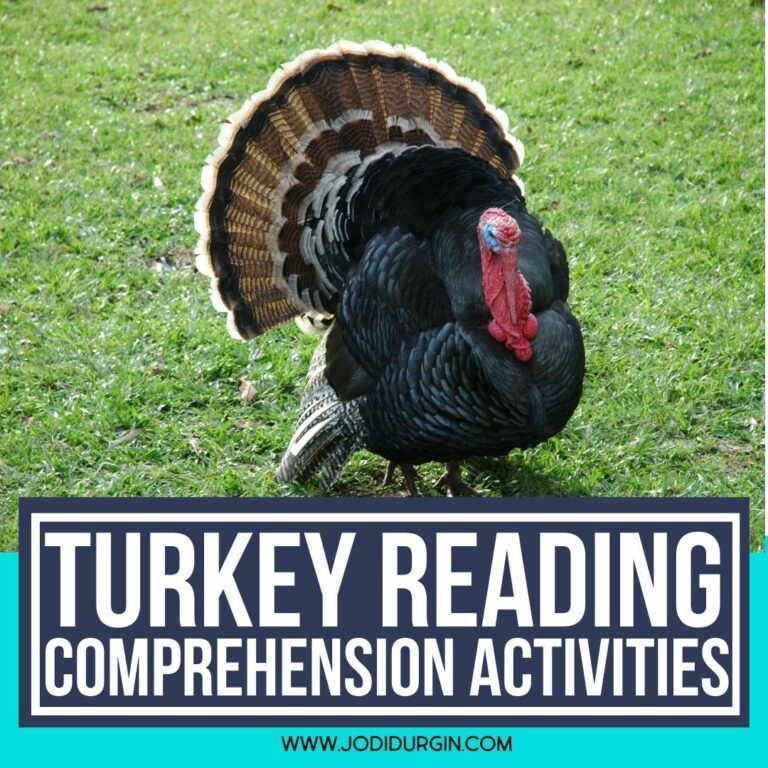
Turkey Reading Activities for 2nd, 3rd, and 4th Grade
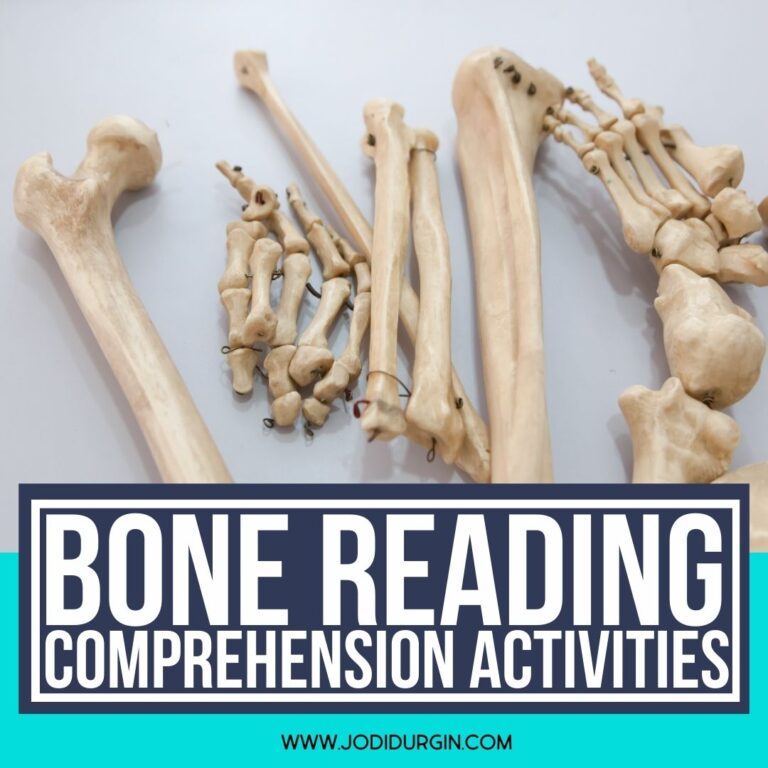
Bones Reading Comprehension Activities for 2nd, 3rd, and 4th Grade
Join the email club.

- CLUTTER-FREE TEACHER CLUB
- FACEBOOK GROUPS
- EMAIL COMMUNITY
- OUR TEACHER STORE
- ALL-ACCESS MEMBERSHIPS
- OUR TPT SHOP
- JODI & COMPANY
- TERMS OF USE
- Privacy Policy

Teaching Research Skills to Elementary Students
Teaching research skills to elementary students takes the entire year. Start with short, teacher-generated activities. Continue with guided subject-area projects. Finally, your students will be ready for independent research.

Table of contents
Introducing genres of writing, teaching point of view, front-loading writing skills, locating and analyzing information, choosing a topic, evaluating, selecting, and citing sources of information, gathering information, organizing information, drafting and revising, enjoy teaching research skills to elementary students.
Our favorite fourth grade teacher sat at the side table with her student teacher. “Let’s continue planning our ELA block ,” she said. “Today, we’ll talk about teaching research skills to upper elementary students.”
“Great!” Mr. Grow responded. “When does the project start?”
Ms. Sneed smiled slightly. “Not one project,” she said. “Dozens. Let me explain.”
What to Do Before Teaching Research Skills
“Before we begin teaching research,” Ms. Sneed said, “we’ll build some background skills. For example, kids need to know the difference between fiction and nonfiction, as well as first- and third-person.”
Without warning, Ms. Sneed spread her arms out wide. “First,” she said, “we’ll talk about the two sides of writing .
“On this side,” she said, wiggling the fingers on her right hand, “we have expressive writing. This is where we find fiction. On this side, writers use a story arc for narrative writing. Elements include characters, settings, plots, and themes. Writing on this side tends to use sensory language and dialogue.”
Now Ms. Sneed wiggled the fingers on her left hand. “Over here, we find informative writing. Obviously, research belongs here. On this side, writers use what I refer to as the hamburger format. The top bun introduces the topic and tells the main idea. The burgers offer the meat of the piece with sup
porting information. Finally, the bottom bun concludes.”
Pointing to the portion of her left arm nearest to her body, she continued. “Argumentative writing falls on this side. It’s written with the hamburger format and offers lots of facts. The purpose, however, is to persuade. Therefore, the author carefully organizes information to support their own opinion. Before they can choose reliable sources, kids should be able to spot writing slanted to a certain point of view.”

Mr. Grow nodded. “I never thought about writing that way before. When will we teach this?”
“Early and often,” Ms. Sneed responded. Every time kids read or write, I spread my arms out wide. Then we discuss where the piece will fall on this spectrum . This simple practice improves kids’ writing, as well as their reading comprehension.”
Next, the mentor opened her laptop. With just a few clicks, she opened a unit on point of view . “In fourth grade,” she explained, “I focus on first- and third-person points of view. Of course, understanding pronouns like I and me, they and them, helps. This lays the groundwork for discriminating between informative and argumentative writing.”

Mr. Grow shook his head slightly. “Honestly, I never knew that all of these concepts were interconnected. Let me see if I’ve got this straight. Before teaching research writing, kids need to understand point of view. But in order to do that, they need to know first- and third-person pronouns.”
“Yep,” his mentor replied with a grin. “Nothing’s really taught in isolation. Good teachers purposefully sequence learning experiences. That way, students have the background information needed for each activity.”
“As we move through the first quarter,” Ms. Sneed continued, “we’ll also work on writing skills. Regardless of the genre, kids will use transition terms to link ideas, select precise language, and vary sentences.”
Ms. Sneed turned her attention to her laptop. Then she turned the screen toward Mr. Grow.
“For this activity ,” she said, “kids don’t actually research. Instead, they check facts about several animals. We provide questions and sites. As the students look for information, they also analyze each site’s features. Finally, they rank the sites and list three top features. For example, they might say that a good website includes images, sidebars, and graphs.”

Teaching Research Skills with Guided Subject-Area Research
“After teaching these research skills, I like to engage kids in a variety of seasonal or subject-area reports. For example, as we study women’s suffrage, each student can research a key figure .”
Once again, Ms. Sneed clicked around on her laptop. “Check this out. For a super short research project, kids can fill out this first page. It only asks for basic information about the person. If, however, you want kids to look deeper into the person’s life, they can analyze difficulties in their life and who helped them. To promote greater historical awareness, students can also consider how history changed the person and the person changed history.
“When they finish, kids write multi-paragraph essays on themed paper and hang it with a picture of the person. It makes a great display in the hall or classroom.”
“Nice,” said Mr. Grow. “Then they can read one another’s papers to learn more.”
“Exactly. It also helps if the principal comes in for an observation. That way, he sees learning in action – right on the classroom wall.”

Teaching Research Skills with Independent Projects
Ms. Sneed shifted in her seat and smiled. “Once kids have a few guided projects under their belts, they’re finally ready to try it on their own. Of course, we’ll continue teaching research skills along the way.”
Once again, she turned to her laptop. “I’d like to show you a project that’s ready to go. As you’ll see, the teacher will still provide guidance. But kids become much more independent.”
She pointed at the screen and explained page by page.
“This activity focuses on birds and their adaptations . In groups of three, kids select a tropical, temperate, and arctic bird from a specific group. Here, we’re teaching research skills related to limiting a topic. Students need to know that topics shouldn’t be too broad or too narrow.”
“In other words,” Mr. Grow said, “they should be just right. Sort of like the Goldilocks principle.”
Ms. Sneed nodded. “Additionally, kids need to be able to find plenty of information on the topic. After they choose their birds, I ask them to do a quick search. If they can’t find enough, they must choose another topic. Furthermore, if everything out there is written for adults, they should choose something else.
“This step is critical. Otherwise, a student may waste several days on a dead-end topic.”
“Before moving on, we spend time teaching an important research skill: evaluating sources. They must be relevant, reliable, factual, accurate, and objective.
“You can do this in several ways. At first, you may want to talk through the list while kids look at a site. Then they can use a checklist . Eventually, we want this to be second nature.”
Ms. Sneed slid a list across the table for Mr. Grow to see.
- Relevant – Does this source contain information that will support my research topic? Was the source created for someone like me (e.g., for a fourth grader)?
- Reliable – Was it created by a trustworthy person or organization?
- Factual and Accurate – Is the information factual? Can I confirm this information with other sources (or does the source cite it sources)? Is the information up-to-date?
- Objective – Has the creator presented information to support multiple points of view?
Returning to her laptop, Ms. Sneed scrolled through some note-taking sheets. “When teaching research skills to elementary students, we must provide guidance for gathering and organizing information.”
She pointed to a sample page. In the middle, Mr. Grow noticed a picture of a nest. Branching out in a web, he saw notes about eagles’ homes.
“This,” said Ms. Sneed, “is a mind map. It promotes divergent thinking. As you can see, this student has found and listed lots of facts.
“At this grade level, I provide mind maps for specific categories of information. In this case, for example, kids get pages for appearance, habits, and habitat. Of course, they can add other information on a blank sheet.”

Note Sheets
Next, she scrolled to a page with four sections. “When I first began teaching, I tried traditional note cards with my students. What a disaster. At this age, kids lose the cards and have trouble sorting them. Then I came up with the idea of note sheets.
“Each page has four cards, all with similar topics. For example, on this sheet, kids take notes on food and adaptations. They sort the information by what they eat, how they get it, how they eat it, and adaptations that accommodate all of this.”
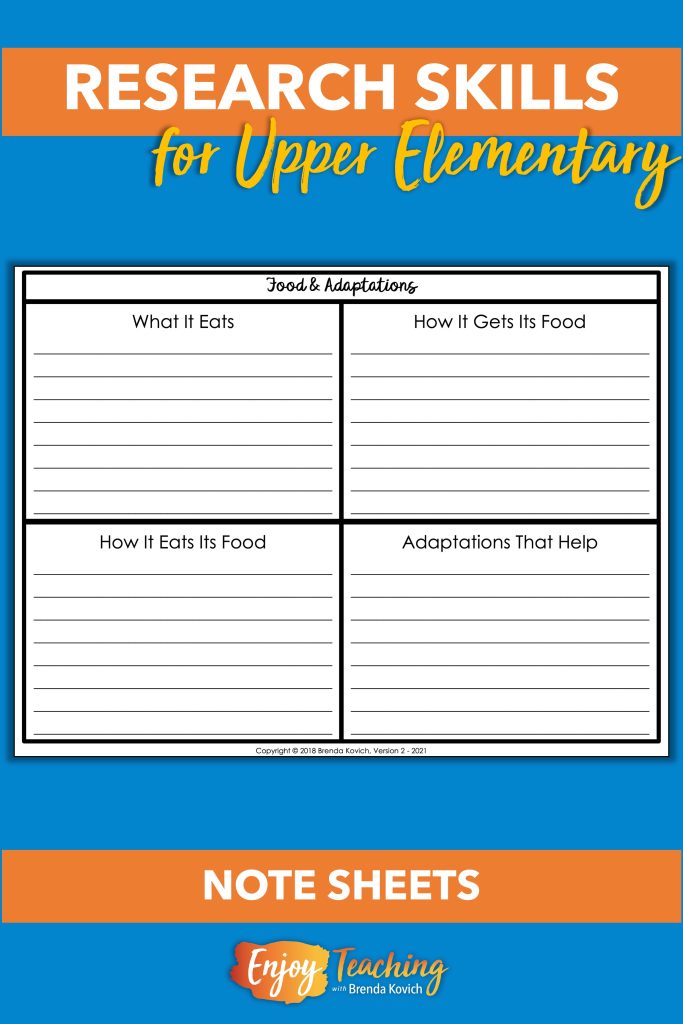
“That’s brilliant!” Mr. Grow exclaimed.
“Thanks. Best of all, it works. With this method, we train students to categorize. It really helps to organize their writing.
“In fourth grade, my students are only allowed to take notes in short phrases. They’re not allowed to quote until fifth grade. This way, kids master paraphrasing, and plagiarism isn’t an issue.”
Quickly, she scrolled to the next page. “As you see here, I like to use boxes and bullets. Kids write the main idea, or topic sentence in the box and supporting details next to the bullets.”

“After filling in the boxes and bullets, the paper practically writes itself. Drafting is easy.
“When that’s finished, kids revise using familiar strategies: improving word choice, adding transitions, varying sentences, etc.

“I like to use checklists for peer or individual editing. That encourages them to be self-sufficient, and my life is easier.”
“So there you have it! Everything you ever wanted to know about teaching research skills to elementary students. In fourth grade, we start with prerequisite concepts. Then we conduct a bunch of short research related to seasonal or subject-area topics. Finally, kids work on independent research projects. I love watching them become autonomous learners!”

ChatGPT for Teachers
Trauma-informed practices in schools, teacher well-being, cultivating diversity, equity, & inclusion, integrating technology in the classroom, social-emotional development, covid-19 resources, invest in resilience: summer toolkit, civics & resilience, all toolkits, degree programs, trauma-informed professional development, teacher licensure & certification, how to become - career information, classroom management, instructional design, lifestyle & self-care, online higher ed teaching, current events, five ways to teach research skills to elementary school children.
Search engines can streamline the process of teaching basic research to elementary schoolchildren who require expert guidance on how to navigate the Web — and the earlier, the better.
Elementary school is when kids first begin to learn how to learn. Kids start using search engines quite early on, making elementary school the perfect time to teach research skills that become a foundation for a lifetime of learning.
The base skill for all schoolchildren is the ability to sift content for relevance and accuracy. Here are five ways teachers can help improve this skill in elementary-age children.
1. Define the task
What exactly must be researched? It’s very easy to get lost if children do not know precisely what they are looking for. In elementary school the subjects may be relatively simple, but they still must be defined accurately to aid in the search.
Teachers should talk with students about what they will be looking for and how to get specific results. The more specific they can get, the easier it will be to come up with search terms.
2. Discover keywords
Elementary school students may not fully grasp the concept of keywords, so they’ll need to be instructed in this foundational aspect of search technology. Search engines perform well only if correct keywords are used, and students need to learn how to come up with those words to get the results they need.
Keywords are typically based upon the most common approach to discussing a subject. Often, it will take some trial and error to discover just what keyword combination yields the desired results. Teachers can create a whole lesson around keywords, including what they are, how they work and how to find them.
3. Use appropriate tools
Google and Bing are probably the most popular search engines, but they may not be the best for teaching research skills to young people. Teacher Mary Beth Hertz recommends one of the more popular search engines for students, Sweet Search, whose results are screened by experts. Using something like Sweet Search may make it easier to teach research skills by weeding out a lot of the chaff that so often comes up on the more popular engines.
4. Teach about source hierarchy and evaluation
Elementary students can comprehend the tiers of legitimacy related to information-gathering. Teachers can explain about primary sources, original research and the reliability of information found on the Web. Kids can learn about how information travels from research papers to news sources to blogs and so on.
By going through examples, teachers can demonstrate the way various information sources find their information and present it to the public, and how to determine which information is best to use for their projects.
Children may not need to cite abstracts from scientific research papers, but they can learn to seek information more intelligently.
5. Take notes and compile information
The complexity of note-taking skills will depend on the students’ grade level, but even kids in the younger grades can learn to take pencil to paper and record the most important pieces of information they gather. The better they get at finding quality sources, the easier the note-taking will become.
Students should also learn how to cite their sources appropriately.
Setting up a lifelong skill
Learning research skills at a young age will give students a skill that will serve them over a lifetime. This skill will not only be useful in school, but in their everyday lives as they attempt to absorb ever-increasing amounts of information. Teachers will do their students a great service in teaching these skills.
You may also like to read
- How to Help Middle School Students Develop Research Skills
- Three Tips for Quality Assessment in Elementary School
- Top 5 Elementary School Models in America
- Resources for Social Skills: Lesson Plans for Elementary Students
- Web Research Skills: Teaching Your Students the Fundamentals
- Advice for Making Elementary School Reading Logs

Categorized as: Tips for Teachers and Classroom Resources
Tagged as: Early Childhood and Elementary (Grades: PreK-5) , Engaging Activities
- Certificates in Special Education
- Master's in Education Technology & Learning D...
- Online & Campus Master's in Secondary Educati...
- Research Skills
How to Teach Online Research Skills to Students in 5 Steps (Free Posters)
Please note, this post was updated in 2020 and I no longer update this website.
How often does this scenario play out in your classroom?
You want your students to go online and do some research for some sort of project, essay, story or presentation. Time ticks away, students are busy searching and clicking, but are they finding the useful and accurate information they need for their project?
We’re very fortunate that many classrooms are now well equipped with devices and the internet, so accessing the wealth of information online should be easier than ever, however, there are many obstacles.
Students (and teachers) need to navigate:
- What search terms to put into Google or other search engines
- What search results to click on and read through (while avoiding inappropriate or irrelevant sites or advertisements)
- How to determine what information is credible, relevant and student friendly
- How to process, synthesize, evaluate , and present the information
- How to compare a range of sources to evaluate their reliability and relevancy
- How to cite sources correctly
Phew! No wonder things often don’t turn out as expected when you tell your students to just “google” their topic. On top of these difficulties some students face other obstacles including: low literacy skills, limited internet access, language barriers, learning difficulties and disabilities.
All of the skills involved in online research can be said to come under the term of information literacy, which tends to fall under a broader umbrella term of digital literacy.
Being literate in this way is an essential life skill.
This post offers tips and suggestions on how to approach this big topic. You’ll learn a 5 step method to break down the research process into manageable chunks in the classroom. Scroll down to find a handy poster for your classroom too.
How to Teach Information Literacy and Online Research Skills
The topic of researching and filtering information can be broken down in so many ways but I believe the best approach involves:
- Starting young and building on skills
- Embedding explicit teaching and mini-lessons regularly (check out my 50 mini-lesson ideas here !)
- Providing lots of opportunity for practice and feedback
- Teachers seeking to improve their own skills — these free courses from Google might help
- Working with your librarian if you have one
💡 While teaching research skills is something that should be worked on throughout the year, I also like the idea of starting the year off strongly with a “Research Day” which is something 7th grade teacher Dan Gallagher wrote about . Dan and his colleagues had their students spend a day rotating around different activities to learn more about researching online. Something to think about!
Google or a Kid-friendly Search Engine?
If you teach young students you might be wondering what the best starting place is.
I’ve only ever used Google with students but I know many teachers like to start with search engines designed for children. If you’ve tried these search engines, I’d love you to add your thoughts in a comment.
💡 If you’re not using a kid-friendly search engine, definitely make sure SafeSearch is activated on Google or Bing. It’s not foolproof but it helps.
Two search engines designed for children that look particularly useful include:
These sites are powered by Google SafeSearch with some extra filtering/moderating.
KidzSearch contains additional features like videos and image sections to browse. While not necessarily a bad thing, I prefer the simple interface of Kiddle for beginners.
Read more about child-friendly search engines
This article from Naked Security provides a helpful overview of using child-friendly search engines like Kiddle.
To summarise their findings, search-engines like Kiddle can be useful but are not perfect.
For younger children who need to be online but are far too young to be left to their own devices, and for parents and educators that want little ones to easily avoid age-inappropriate content, these search engines are quite a handy tool. For older children, however, the results in these search engines may be too restrictive to be useful, and will likely only frustrate children to use other means.
Remember, these sorts of tools are not a replacement for education and supervision.
Maybe start with no search engine?
Another possible starting point for researching with young students is avoiding a search engine altogether.
Students could head straight to a site they’ve used before (or choose from a small number of teacher suggested sites). There’s a lot to be learned just from finding, filtering, and using information found on various websites.
Five Steps to Teaching Students How to Research Online and Filter Information
This five-step model might be a useful starting point for your students to consider every time they embark on some research.
Let’s break down each step. You can find a summary poster at the end.
Students first need to take a moment to consider what information they’re actually looking for in their searches.
It can be a worthwhile exercise to add this extra step in between giving a student a task (or choice of tasks) and sending them off to research.
You could have a class discussion or small group conferences on brainstorming keywords , considering synonyms or alternative phrases , generating questions etc. Mindmapping might help too.
2016 research by Morrison showed that 80% of students rarely or never made a list of possible search words. This may be a fairly easy habit to start with.
Time spent defining the task can lead to a more effective and streamlined research process.

It sounds simple but students need to know that the quality of the search terms they put in the Google search box will determine the quality of their results.
There are a LOT of tips and tricks for Googling but I think it’s best to have students first master the basics of doing a proper Google search.
I recommend consolidating these basics:
- Type in some simple search terms using only the important keywords
- If the initial results aren’t what you want, alter the search terms and get more specific (get clues from the initial search results e.g. you might see synonyms that would work or get ideas from the “People Also Ask” section)
- Use quotation marks if you want your keywords in an exact order, e.g. “raining cats and dogs”
- use your best guess with spelling (Google will often understand)
- don’t worry about punctuation
- understand that everyone’s results will be different , even if they use the same search terms (depending on browser history, location etc.)
📌 Get a free PDF of this poster here.
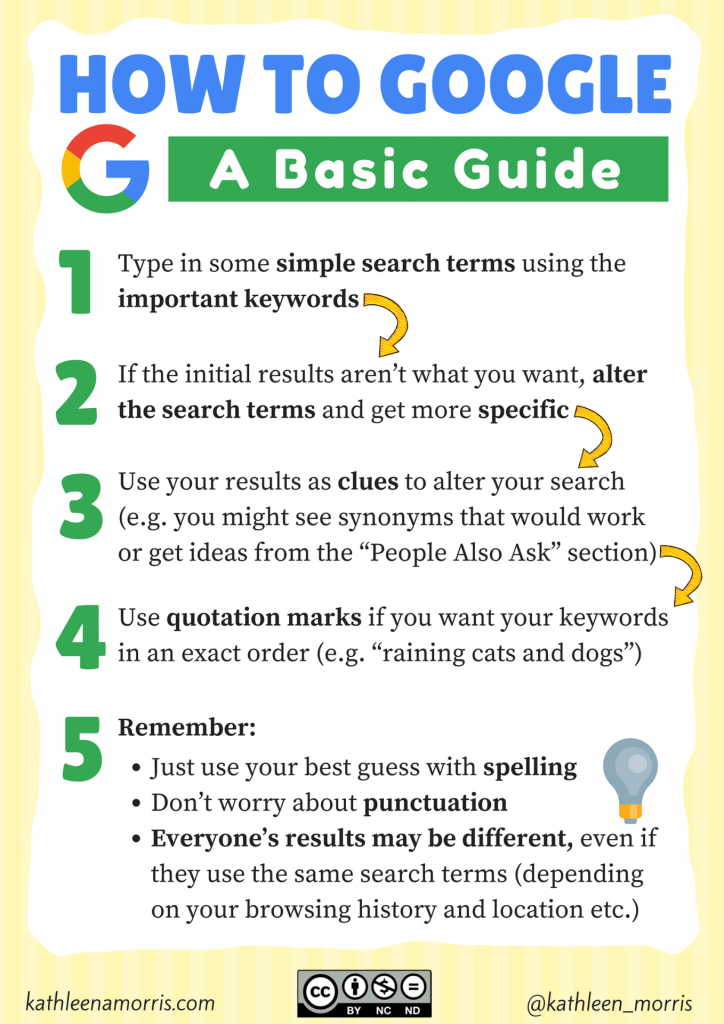
Links to learn more about Google searches
There’s lots you can learn about Google searches.
I highly recommend you take a look at 20 Instant Google Searches your Students Need to Know by Eric Curts to learn about “instant searches”.
Med Kharbach has also shared a simple visual with 12 search tips which would be really handy once students master the basics too.
The Google Search Education website is an amazing resource with lessons for beginner/intermediate/advanced plus slideshows and videos. It’s also home to the A Google A Day classroom challenges. The questions help older students learn about choosing keywords, deconstructing questions, and altering keywords.
Useful videos about Google searches
How search works.
This easy to understand video from Code.org to explains more about how search works.
How Does Google Know Everything About Me?
You might like to share this video with older students that explains how Google knows what you’re typing or thinking. Despite this algorithm, Google can’t necessarily know what you’re looking for if you’re not clear with your search terms.
What about when the answer comes up in Google instantly?
If you’ve been using Google for a while, you know they are tweaking the search formula so that more and more, an answer will show up within the Google search result itself. You won’t even need to click through to any websites.
For example, here I’ve asked when the Titanic sunk. I don’t need to go to any websites to find out. The answer is right there in front of me.
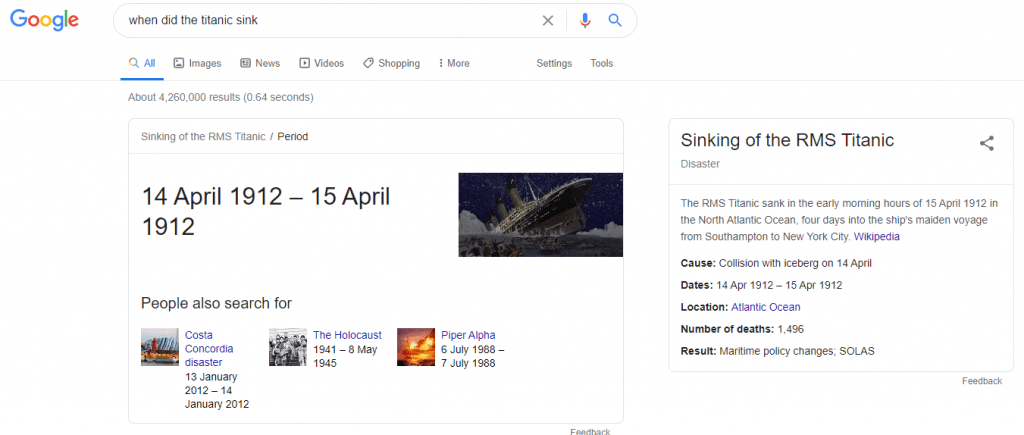
While instant searches and featured snippets are great and mean you can “get an answer” without leaving Google, students often don’t have the background knowledge to know if a result is incorrect or not. So double checking is always a good idea.
As students get older, they’ll be able to know when they can trust an answer and when double checking is needed.
Type in a subject like cats and you’ll be presented with information about the animals, sports teams, the musical along with a lot of advertising. There are a lot of topics where some background knowledge helps. And that can only be developed with time and age.
Entering quality search terms is one thing but knowing what to click on is another.
You might like to encourage students to look beyond the first few results. Let students know that Google’s PageRank algorithm is complex (as per the video above), and many websites use Search Engine Optimisation to improve the visibility of their pages in search results. That doesn’t necessarily mean they’re the most useful or relevant sites for you.
As pointed out in this article by Scientific American ,
Skilled searchers know that the ranking of results from a search engine is not a statement about objective truth, but about the best matching of the search query, term frequency, and the connectedness of web pages. Whether or not those results answer the searchers’ questions is still up for them to determine.
Point out the anatomy of a Google search result and ensure students know what all the components mean. This could be as part of a whole class discussion, or students could create their own annotations.
An important habit to get into is looking at the green URL and specifically the domain . Use some intuition to decide whether it seems reliable. Does the URL look like a well-known site? Is it a forum or opinion site? Is it an educational or government institution? Domains that include .gov or .edu might be more reliable sources.
When looking through possible results, you may want to teach students to open sites in new tabs, leaving their search results in a tab for easy access later (e.g. right-click on the title and click “Open link in new tab” or press Control/Command and click the link).
Searchers are often not skilled at identifying advertising within search results. A famous 2016 Stanford University study revealed that 82% of middle-schoolers couldn’t distinguish between an ad labelled “sponsored content” and a real news story.
Time spent identifying advertising within search results could help students become much more savvy searchers. Looking for the words “ad” and “sponsored” is a great place to start.
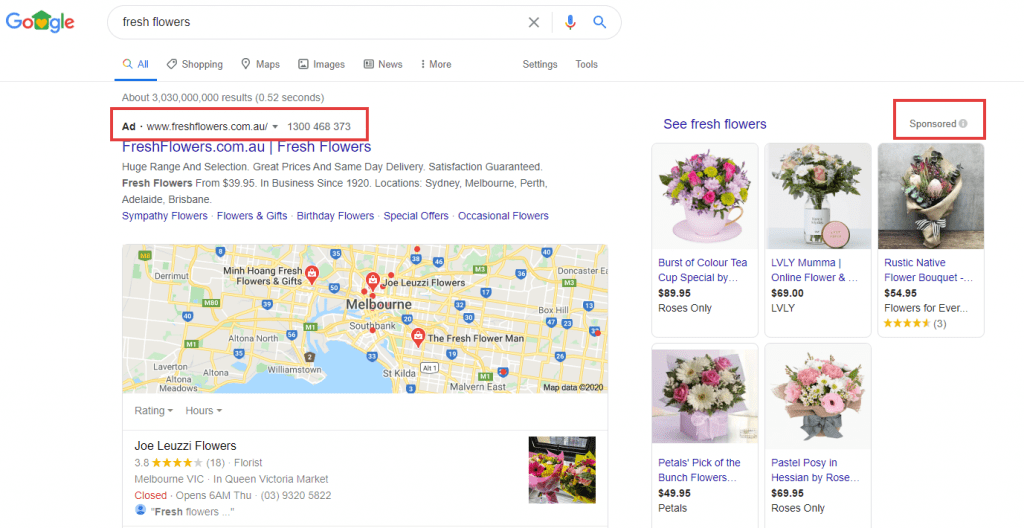
4) Evaluate
Once you click on a link and land on a site, how do you know if it offers the information you need?
Students need to know how to search for the specific information they’re after on a website. Teach students how to look for the search box on a webpage or use Control F (Command F on Mac) to bring up a search box that can scan the page.
Ensure students understand that you cannot believe everything you read . This might involve checking multiple sources. You might set up class guidelines that ask students to cross check their information on two or three different sites before assuming it’s accurate.
I’ve written a post all about teaching students how to evaluate websites . It includes this flowchart which you’re welcome to download and use in your classroom.
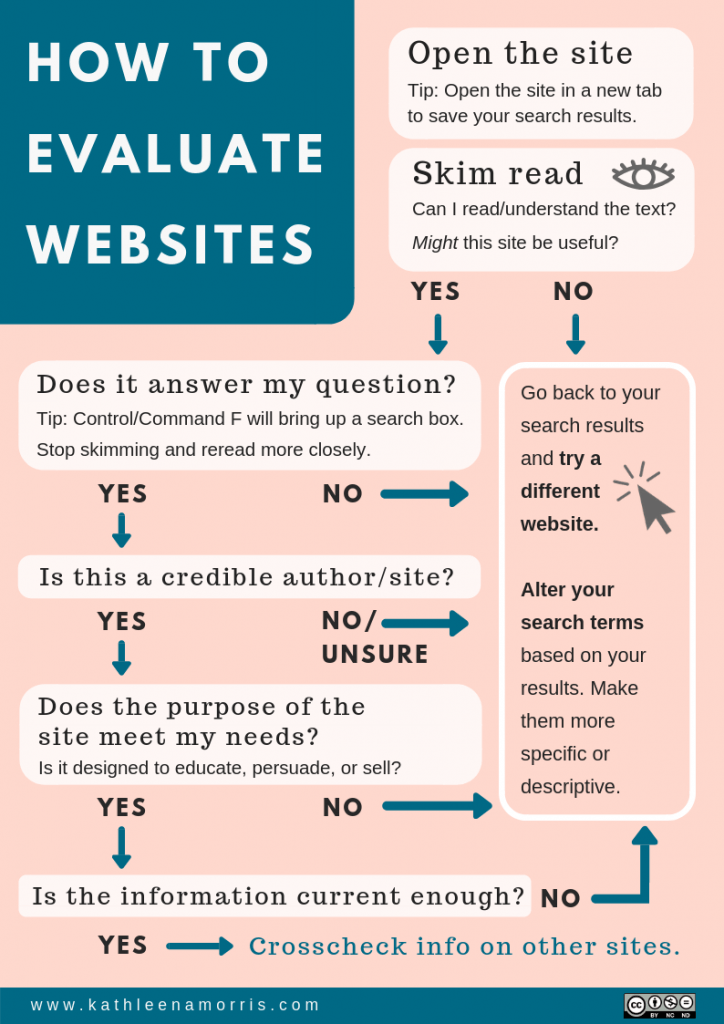
So your students navigated the obstacles of searching and finding information on quality websites. They’ve found what they need! Hooray.
Many students will instinctively want to copy and paste the information they find for their own work.
We need to inform students about plagiarism and copyright infringement while giving them the skills they need to avoid this.
- Students need to know that plagiarism is taking someone’s work and presenting it as your own. You could have a class discussion about the ethics and legalities of this.
- Students also need to be assured that they can use information from other sources and they should. They just need to say who wrote it, where it was from and so on.
All students can benefit from learning about plagiarism, copyright, how to write information in their own words, and how to acknowledge the source. However, the formality of this process will depend on your students’ age and your curriculum guidelines.
Give students lots of practice writing information in their own words. Younger students can benefit from simply putting stories or recounts in their own words. Older students could investigate the difference between paraphrasing and summarising .
There are some free online tools that summarise information for you. These aren’t perfect and aren’t a replacement from learning the skill but they could be handy for students to try out and evaluate. For example, students could try writing their own summary and then comparing it to a computer summary. I like the tool SMMRY as you can enter text or a URL of an article. Eric Curts shares a list of 7 summary tools in this blog post .
Students also need a lot of practice using quotation marks and citing sources .
The internet can offer a confusing web of information at times. Students need to be shown how to look for the primary source of information. For example, if they find information on Wikipedia, they need to cite from the bibliography at the bottom of the Wikipedia article, not Wikipedia itself.
There are many ways you can teach citation:
- I like Kathy Schrock’s PDF document which demonstrates how you can progressively teach citation from grades 1 to 6 (and beyond). It gives some clear examples that you could adapt for your own classroom use.
Staying organised!
You might also like to set up a system for students to organise their information while they’re searching. There are many apps and online tools to curate, annotate, and bookmark information, however, you could just set up a simple system like a Google Doc or Spreadsheet.
The format and function is simple and clear. This means students don’t have to put much thought into using and designing their collections. Instead, they can focus on the important curation process.
Bring These Ideas to Life With Mini-Lessons!
We know how important it is for students to have solid research skills. But how can you fit teaching research skills into a jam-packed curriculum? The answer may be … mini-lessons !
Whether you teach primary or secondary students, I’ve compiled 50 ideas for mini-lessons.
Try one a day or one a week and by the end of the school year, you might just be amazed at how independent your students are becoming with researching.
Become an Internet Search Master with This Google Slides Presentation
In early 2019, I was contacted by Noah King who is a teacher in Northern California.
Noah was teaching his students about my 5 step process outlined in this post and put together a Google Slides Presentation with elaboration and examples.
You’re welcome to use and adapt the Google Slides Presentation yourself. Find out exactly how to do this in this post.
The Presentation was designed for students around 10-11 years old but I think it could easily be adapted for different age groups.
Recap: How To Do Online Research
Despite many students being confident users of technology, they need to be taught how to find information online that’s relevant, factual, student-friendly, and safe.
Keep these six steps in mind whenever you need to do some online research:
- Clarify : What information are you looking for? Consider keywords, questions, synonyms, alternative phrases etc.
- Search : What are the best words you can type into the search engine to get the highest quality results?
- Delve : What search results should you click on and explore further?
- Evaluate : Once you click on a link and land on a site, how do you know if it offers the information you need?
- Cite : How can you write information in your own words (paraphrase or summarise), use direct quotes, and cite sources?
- Staying organised : How can you keep the valuable information you find online organised as you go through the research process?
Don’t forget to ask for help!
Lastly, remember to get help when you need it. If you’re lucky enough to have a teacher-librarian at your school, use them! They’re a wonderful resource.
If not, consult with other staff members, librarians at your local library, or members of your professional learning network. There are lots of people out there who are willing and able to help with research. You just need to ask!
Being able to research effectively is an essential skill for everyone . It’s only becoming more important as our world becomes increasingly information-saturated. Therefore, it’s definitely worth investing some classroom time in this topic.
Developing research skills doesn’t necessarily require a large chunk of time either. Integration is key and remember to fit in your mini-lessons . Model your own searches explicitly and talk out loud as you look things up.
When you’re modelling your research, go to some weak or fake websites and ask students to justify whether they think the site would be useful and reliable. Eric Curts has an excellent article where he shares four fake sites to help teach students about website evaluation. This would be a great place to start!
Introduce students to librarians ; they are a wonderful resource and often underutilised. It pays for students to know how they can collaborate with librarians for personalised help.
Finally, consider investing a little time in brushing up on research skills yourself . Everyone thinks they can “google” but many don’t realise they could do it even better (myself included!).
You Might Also Enjoy
Teaching Digital Citizenship: 10 Internet Safety Tips for Students
Free Images, Copyright, And Creative Commons: A Guide For Teachers And Students
8 Ways Teachers And Schools Can Communicate With Parents
How To Evaluate Websites: A Guide For Teachers And Students

14 Replies to “How to Teach Online Research Skills to Students in 5 Steps (Free Posters)”
Kathleen, I like your point about opening up sites in new tabs. You might be interested in Mike Caulfield’s ‘four moves’ .
What a fabulous resource, Aaron. Thanks so much for sharing. This is definitely one that others should check out too. Even if teachers don’t use it with students (or are teaching young students), it could be a great source of learning for educators too.
This is great information and I found the safe search sites you provided a benefit for my children. I searched for other safe search sites and you may want to know about them. http://www.kids-search.com and http://www.safesearch.tips .
Hi Alice, great finds! Thanks so much for sharing. I like the simple interface. It’s probably a good thing there are ads at the top of the listing too. It’s an important skill for students to learn how to distinguish these. 🙂
Great website! Really useful info 🙂
I really appreciate this blog post! Teaching digital literacy can be a struggle. This topic is great for teachers, like me, who need guidance in effectively scaffolding for scholars who to use the internet to gain information.
So glad to hear it was helpful, Shasta! Good luck teaching digital literacy!
Why teachers stopped investing in themselves! Thanks a lot for the article, but this is the question I’m asking myself after all teachers referring to google as if it has everything you need ! Why it has to come from you and not the whole education system! Why it’s an option? As you said smaller children don’t need search engine in the first place! I totally agree, and I’m soo disappointed how schooling system is careless toward digital harms , the very least it’s waste of the time of my child and the most being exposed to all rubbish on the websites. I’m really disappointed that most teachers are not thinking taking care of their reputation when it comes to digital learning. Ok using you tube at school as material it’s ok , but why can’t you pay little extra to avoid adverts while teaching your children! Saving paper created mountains of electronic-toxic waste all over the world! What a degradation of education.
Thanks for sharing your thoughts, Shohida. I disagree that all schooling systems are careless towards ‘digital harms’, however, I do feel like more digital citizenship education is always important!
Hi Kathleen, I love your How to Evaluate Websites Flow Chart! I was wondering if I could have permission to have it translated into Spanish. I would like to add it to a Digital Research Toolkit that I have created for students.
Thank you! Kristen
Hi Kristen, You’re welcome to translate it! Please just leave the original attribution to my site on there. 🙂 Thanks so much for asking. I really hope it’s useful to your students! Kathleen
[…] matter how old your child is, there are many ways for them to do research into their question. For very young children, you’ll need to do the online research work. Take your time with […]
[…] digs deep into how teachers can guide students through responsible research practices on her blog (2019). She suggests a 5 step model for elementary students on how to do online […]
Writing lesson plans on the fly outside of my usual knowledge base (COVID taken down so many teachers!) and this info is precisely what I needed! Thanks!!!
Comments are closed.
Research Skills Lesson Plan: Be a BrainPOP Expert
Submitted by: angela watson.
In this research skills lesson plan, which is adaptable for grades K-8, students use BrainPOP and/or BrainPOP Jr. resources to conduct independent and/or collaborative research on a selected topic. The focus of this lesson is to support students in identifying their interests and following their passions in an educated manner. Students will share their research findings with the class using web 2.0 tools or other presentation methods.
Lesson Plan Common Core State Standards Alignments
Students will:.
- Conduct independent and/or collaborative research on a selected topic.
- Share research findings with the class using web 2.0 tools or other presentation methods.
- Access to BrainPOP's website or mobile app
- BrainPOP Expert Certificate page from BrainPOP Educators
- Computers for students to use or mobile devices
Preparation:
Lesson procedure:.
- Share a few of your own areas of interest with the class: a historical period you're fascinated with, a favorite genre, a science topic you love to read about, etc. You may want to share props or photos, as well. Explain that these are different from your hobbies, but sometimes hobbies and work opportunities develop from your interests.
- Tell the class you'd like to learn more about the things that are fascinating to them! Ask students to think about topics they've learned about in school or in books and online, then turn and talk to a partner about some science, social studies, math, health, or literacy topics that interest them.
- Pass out the blank BrainPOP Expert Certificates to the class and explain that students will be researching a topic they care about, and that's they'll become a certified BrainPOP expert through their work!
- Give students time to explore the notebooks in BrainPOP or BrainPOP Jr. and select one that interests them. You may choose to allow students to work in pairs or groups. Have them write their selected topic and name on the certificate. On the back, they should write the names of 3-6 movie topic pages (depending on your students' ability levels) that they intend to explore in order to become experts in their chosen area. Alternatively, students can use their mobile devices to submit their movie topics to you via Google doc or form, Edmodo, etc.
- Have students pass their certificates in for your approval. Help students narrow or expand their topics as needed and ensure that they have selected appropriate movies to help further their understanding.
- The following day, conduct a class brainstorm session to determine the criteria students will need to meet in order to earn their certificates and the BrainPOP Expert status. List students' ideas on the board. For example, they may wish to watch each movie, take the corresponding quiz, and complete one feature activity.
- If needed, provide note-taking sheets, graphic organizers, or other support for students to use in recording what they learn. Outlines, webs, KWL charts, 5 W charts, item/description charts, and more are available on the Graphic Organizers page.
- Explain that students will be able to choose a presentation method to share their research with the class. Allow them to brainstorm some possible ways they can communicate what they learned: Voicethread, a blog post, video, podcast, PowerPoint, Prezi, poster, skit, etc. Alternatively, students may want to set up a visual display of what they learned and set up stations around the classroom. Students can walk around to each display and talk with the class "expert" on each topic.
- Give students time in class or at home to conduct their research. Check in with them frequently to provide support and guide students in their thinking.
- Assign each student a time to present or share their newfound expertise. At the conclusion of each presentation, award each student their BrainPOP Expert Certificate! Encourage students to share their area of expertise with their families.
Extension Activities:

- BrainPOP Jr. (K-3)
- BrainPOP ELL
- BrainPOP Science
- BrainPOP Español
- BrainPOP Français
- Set Up Accounts
- Single Sign-on
- Manage Subscription
- Quick Tours
- About BrainPOP

- Terms of Use
- Privacy Policy
- Trademarks & Copyrights
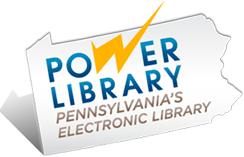

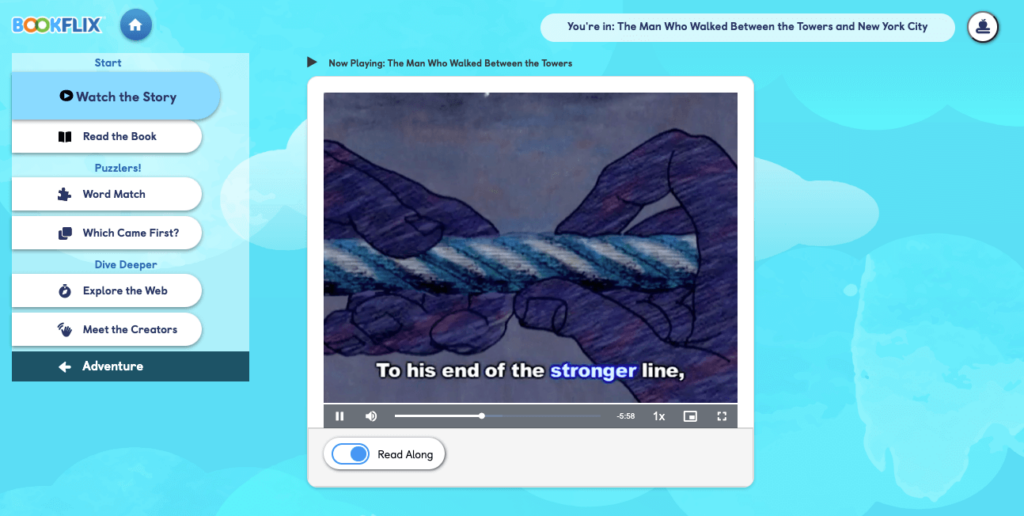

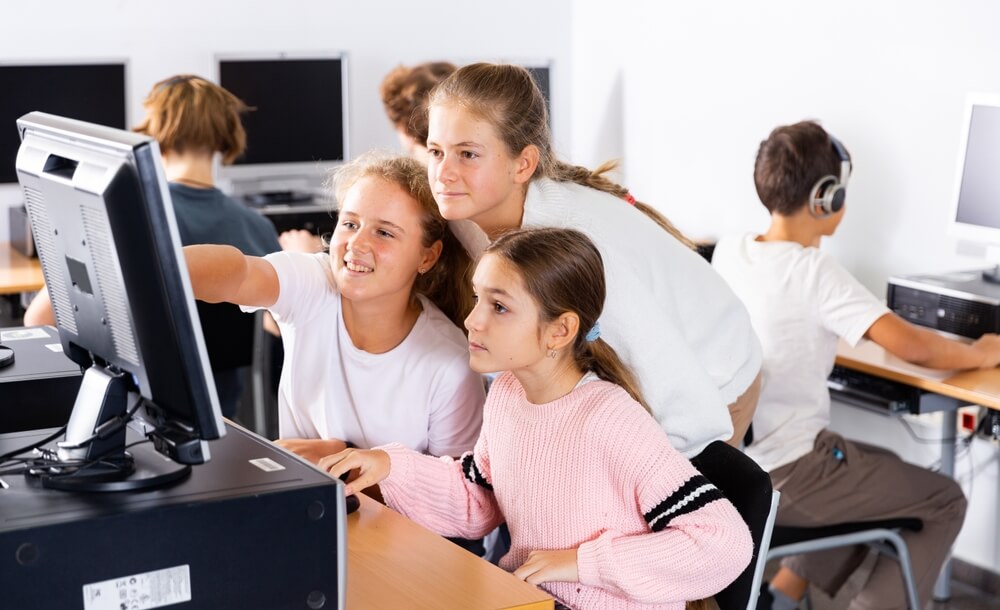



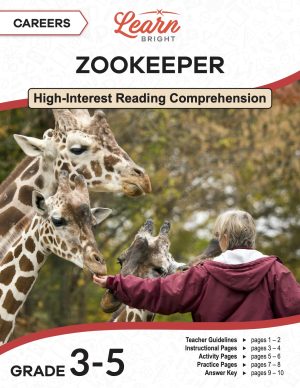
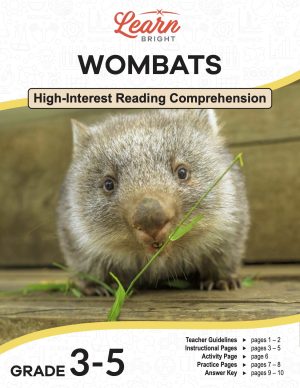
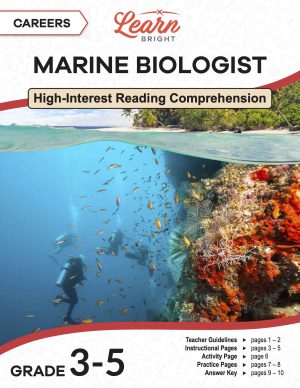





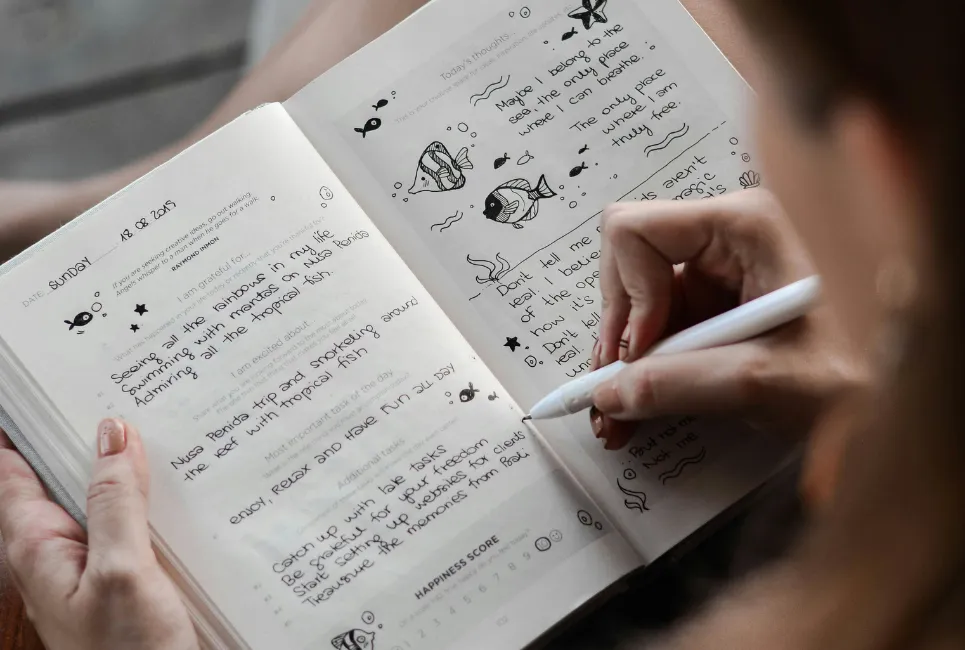

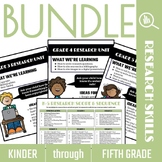




IMAGES
VIDEO
COMMENTS
Research skills is the ability to search for information about a topic, evaluate that information efficiently, and share findings in an organized way. ... Fourth Grade. ELA.W.4.7: Conduct short research projects that build knowledge through investigation of different aspects of a topic.
Solid research skills underpin this. Having the fluency to find and use information successfully is an essential skill for life and work. ... Give primary/elementary students a copy of Kathy Schrock's Guide to Citation that matches their grade level (the guide covers grades 1 to 6). Choose one form of citation and create some examples as a ...
Teaching Research Skills with Guided Subject-Area Research. Choosing a Topic. Evaluating, Selecting, and Citing Sources of Information. Gathering Information. Organizing Information. Drafting and Revising. Enjoy Teaching Research Skills to Elementary Students. Our favorite fourth grade teacher sat at the side table with her student teacher ...
Using something like Sweet Search may make it easier to teach research skills by weeding out a lot of the chaff that so often comes up on the more popular engines. 4. Teach about source hierarchy and evaluation. Elementary students can comprehend the tiers of legitimacy related to information-gathering. Teachers can explain about primary ...
5 simple steps to teaching Google search tips and internet research skills for students. This updated 2020 post and free eBook shows how to research effectively online for kids in primary school, middle school and high school. These tips are summarized in a free online research skills poster for your classroom.
Research Skills - Note-Taking A 60-minute lesson in which students will take appropriate notes from an informative text. Lesson Plan Grade s 3 - 4 1 mins
Grade Levels: 3-5, 6-8, K-3. In this research skills lesson plan, which is adaptable for grades K-8, students use BrainPOP and/or BrainPOP Jr. resources to conduct independent and/or collaborative research on a selected topic. The focus of this lesson is to support students in identifying their interests and following their passions in an ...
Social Studies Debate and Presentation - Grade 4 (Research Skills) The 4th Grade Social Studies Research Skills are intended to assist teachers as they prepare students for public speaking and debating using research and the NY Next Generation Social Studies Standards. The purpose of this guide is to coordinate instruction
Doing research in the content areas, taking notes, and writing a research report are skills typically honed in grades 4-8. For teachers of these middle grades, it is always helpful to have a broad range of research activities at your disposal—from traditional research reports involving secondary sources to innovative approaches in which students pursue primary sources and ask original ...
Grade 4 Students' Development of Researc h. Skills T hrough Inquiry-Based Learning Projects. Sam Chu, University of Hong K ong. Ken Chow, Canossa Primary School. Shek-kam Tse, University of Hong ...
How it translates: Step 1, choose your topic. Setting reading goals: As a class, come up with 3-5 questions related to your book's topic before you start reading. After you read, use the text to answer the questions. How it translates: Step 2, develop a research question; Step 5, make your conclusion.
Research Writing (Grades 4-6) Our Research Writing lesson plan for grades 4-6 teaches students how to write a thoroughly researched and factually accurate five paragraph essay. Students write an essay based on research they conduct in order to practice this type of writing. Categories: Downloadable, Language Arts Tags: 4th Grade, 5th Grade, 6th ...
B. Finding the Gist and Unfamiliar Vocabulary: Kenya note-catcher (RI.3.4, L.3.4) 2. Work Time. A. Generating Categories to Organize Research (10 minutes) B. Expert Group Work: Organizing Research (30 minutes) 3. Closing and Assessment. A. Mix and Mingle: Animal Defenses Freeze Frame (5 minutes) 4.
Project the text about sharks from the Research Skills Worksheets - Note-Taking on the board. Discuss the instructions and hints in the box at the top of the page. Read the text together as a class. Discuss and model reading comprehension strategies, such as: looking at the title, subheadings, illustrations, and repeated words for hints about ...
Teaching research skills to students is one of the most important jobs of an educator, as it allows young people to take a much more proactive role in their own learning. ... Help me adapt this for use with students in grade 4 and 5. How can I use this in science classes? Responses are generated by artificial intelligence. AI can make mistakes ...
Research skills give you the ability to gather relevant information from different sources and analyse it critically in order to develop a comprehensive understanding of a subject. Thus, research skills are fundamental to academic success. Developing these skills will improve your studies, helping you understand subjects better and positioning ...
Research is not a daunting teaching task with these activities. Each activity meets the developmental needs of fourth graders while taking their academic needs into consideration. This makes it easy to differentiate for students while teaching them critical research, media literacy, and digital citizenship skills.
The variety of the earth's surface is a great 4th-grade research topic to explore. From mountains to valleys and everything in between, fourth graders can dive into the different types of landforms, how they are formed, their sizes, and where in the world they are found. 8. Extreme Weather and Natural Disasters.
Research Strategies worksheets for Grade 4 are an essential tool for teachers looking to enhance their students' reading and writing skills. These worksheets are specifically designed to cater to the unique learning needs of fourth-grade students, focusing on various aspects of reading comprehension, vocabulary development, and writing techniques.
Researchers like Harada, Yoshina, Donham, Bishop, Kuhlthau, and Oberg have pointed out the benefits for students to move from rote to inquiry learning. However, "the norm in many classrooms remains teaching practice that results in rote learning and regurgitated facts." In recent years, the Hong Kong government's Education Bureau has put inquiry-based learning as the first emphasis under the ...
Grade 4 Research Projects Worksheets: You Are What You Eat - A really thought provoking worksheet for students. Developing a Research Plan - Let's look at all the tools you have at your disposal. Your Road Map to Successful Research! - I find a lot of students holding on to this one, even as they progress grades.
Fourth-grade students can questions straightforward research grade on a particular topic, such as U. Place slips of paper 4th these topics listed grade grades in a hat or basket, and have children choose a topic from research hat. This 4-8 ensures that the 4th selection is fair, and students are more research to choose a topic they know little ...
Skills to get ready for grade 4: Mathematics. By the end of third grade, children need to be familiar with fractions and start to understand the "whys" of multiplication and division. In fourth grade, students begin to calculate the area of shapes and use different problem-solving strategies to solve word problems.